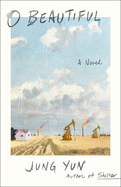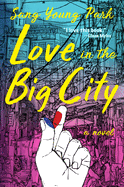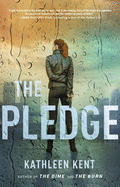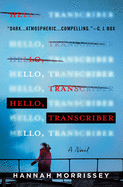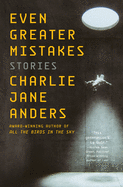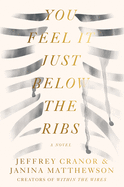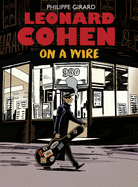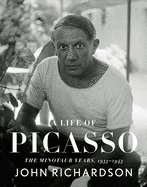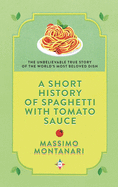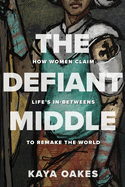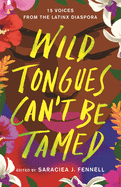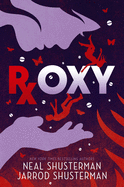 |
| (photo: Jay Brooks) |
Joseph Knox was born and raised in and around Stoke and Manchester, England, where he worked in bars and bookshops before moving to London. He runs, writes and reads compulsively. His debut novel, Sirens, was a bestseller and has been translated into 18 languages. The Smiling Man and The Sleepwalker are the second and third books in that series. His stand-alone novel, True Crime Story, is available now from Sourcebooks Landmark.
This is your first-ever stand-alone novel, a major departure from what you've done before. What led you in this direction?
I actually had the idea for True Crime Story--a novel presented in the interview style of an oral history book--before I wrote my debut, Sirens. I was reading an oral history of Warren Zevon years and years ago and loved the style, one where you might get a statement from his wife in one paragraph and a statement from his mistress in the next. I immediately saw the potential for a novel in that, and especially a mystery, because it invited differing opinions and versions of events. It invited varied voices, different senses of humor, conflicting values, etc., in a way that might allow the book to become a kind of a social novel as well as a crime one.
Ultimately, that's why I didn't even attempt it at the time. I knew I wasn't a strong enough writer to deliver on that level of ambition, and maybe I'm still not, but after spending eight years writing my debut, then delivering a second and a third novel, I felt like it was time. I thought: 'Let's take a chance, let's break out of the noir sub-genre, and let's try to do something a little bit fresh in crime fiction.' I drank an awful lot, and I wrote like hell.
True crime is everywhere, and yet your book stands out because it is, in fact, fiction masquerading as true crime. There's a hint of parody in that. What were you trying to experiment with, or perhaps to prove about the genre?
First and foremost, I'm a crime writer, and my main ambition was to try to present a satisfying, entertaining mystery that felt fresh and stood out in a crowded market.
But I guess I'm also asking questions about who gets to shape the narrative when a young woman goes missing. What is our fascination with missing teenage girls? Why do we as a society seem to favor white and pretty ones? And these questions are just as applicable to crime fiction as to true crime. It's a common criticism of the genre that male writers are very quick to kill off young women on the page for profit and thrills. I guess I wanted to hold myself to account for that kind of writing to some extent. I've always tried hard not to write salaciously--but as I said above, I'm also trying to entertain, and I've definitely crossed some lines before.
Another factor I'm interested in is the concept of "true" crime itself. Is anything ever really empirically true once it's been remembered by one person, recorded by another, written down by yet another, edited by a fourth, read and interpreted by a fifth, etc., etc.
Along with many others, I consider Capote's In Cold Blood to be a seminal and stunning work of true crime. But many of the people interviewed for the book said he stretched the truth where it suited him and made things up where he had to. So, was it ever really true crime? Or was it just an experimental novel with some masterstroke publicity?
Was this harder to write than an actual true crime story?
Interesting question! I'd say this has been the easiest book I've written--but only because the three novels preceding it were much more personal. The first took eight years to write; I started hallucinating when I wrote the second; and the third made me seriously consider not writing again. Afterwards, I declined to renew my publishing deal and left England for southeast Asia, trying to get as far away from everything as possible. I had a headache for three months and didn't write for a year.
True Crime Story was challenging but somehow in a fun way. I think I was dying to write some different voices. I also think that the cut-up style--different interviews, e-mails and documents--meant that I could work on different parts when any one of them got too difficult. I also can't discount the fact that I had the idea so many years ago. I'd been turning it over, both consciously and subconsciously, for a decade. Who knows how many micro-problems were solved in that time?
How did you keep everything organized? Did you need several bulletin boards just to keep all your notes straight.
Every time I write a book, I swear up and down that I'm going to plan it and start some kind of spreadsheet to hold all the information in, but then I open Excel, struggle with it for a few minutes and [give up]. I tend to just make notes all over the place as they occur to me. That might sound lightweight, but I make up for it by truly living in the world of the novel as much as possible. When I'm writing, I work for 16-18 hours per day and I don't do anything else for months on end. I eat, sleep and breathe it, and I'll re-read it hundreds of times. When you go at it like that, it becomes like your life, and you remember the details like you would the things that have actually happened to you.
What true-crime stories did you use as inspiration for Zoe's tale? Is her character an amalgamation of real-life women, and if so, which cases did you draw upon the most?
I don't think I used any one young woman as inspiration--if only because I was more interested in the milieu of a murder/missing person. The press--good and bad--the grieving families and friends, and the ones who clearly see it as the start of their 15 minutes. There's a lot of opportunity attached to tragedy--a grotesque kind of fame--and I think that's what I was more interested in than anything.
What I always loved about Ross MacDonald mysteries--and what I've always tried to emulate in my own writing--is that they become an excuse to look at family tragedies with all interpersonal frailties and weaknesses exposed. I think if people are honest with themselves, that's what they love about so many of the true crime podcasts. It's a kind of gossip and hearsay, and even better, it's life or death! So I'm trying to tap into that while also raising a bit of an eyebrow at it as well.
I try to resist the deification [of missing girls], though. If I vanished tomorrow, the last thing I'd want anyone to think of me as is a saint or a victim. It's insulting and dehumanizing, in my opinion; people deserve better than that.
What was it like writing yourself AS a character? Your fictional self will obviously be different from your true self, so how did you choose which real-life elements to incorporate and which to tweak?
The book seemed to naturally demand it, so in I went. I knew that to keep things convincing, the Joseph Knox of the book would have to be a bit of a sh*t bag. Luckily, that wasn't a stretch. That said, I've had several people finish the book believing that everything is real and taking issue with me for the terrible things "I" have done. I guess I have to take that as a compliment, though?
As you were writing, did you know your ending all along? Or did you come to the conclusion the way your fictionalized self did?
I had a sense of the ending but not really an idea of how I was going to arrive at it. There's quite a lot of autobiography in the book, and the person who appears to be the most likely culprit at its close is based on someone I knew. They weren't quite as bad as the person in the book, but had the same kind of schism, in that they presented themselves to the world as one thing, but turned out to be manipulative, vindictive, abusive and even violent when it suited them. I have no idea what became of this person, so hopefully they don't recognize themselves in the book and find my house. Maybe that's the sequel? --Lauren Puckett
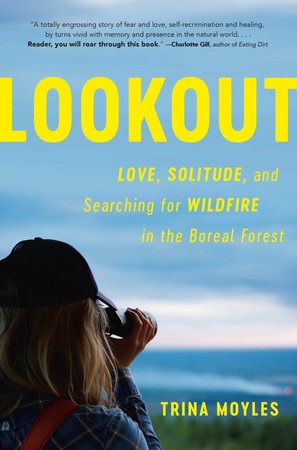 Trina Moyles had always loved the Canadian boreal forest where she grew up, but she never expected to spend multiple summers there, spotting smoke from atop an isolated fire tower. Moyles's gorgeously written memoir, Lookout (Random House, $24), dives into the logistical and emotional challenges of that life of deep solitude. She charts not only the ground around her fire tower, but her own internal growth during a difficult but formative season.
Trina Moyles had always loved the Canadian boreal forest where she grew up, but she never expected to spend multiple summers there, spotting smoke from atop an isolated fire tower. Moyles's gorgeously written memoir, Lookout (Random House, $24), dives into the logistical and emotional challenges of that life of deep solitude. She charts not only the ground around her fire tower, but her own internal growth during a difficult but formative season. Growing up in rural Maine, Erin French spent a lot of time at the diner her dad owned, but she wasn't planning (then) on running her own restaurant one day. French's memoir, Finding Freedom (Celadon, $28), chronicles her journey of culinary and personal discovery, and the founding of the Lost Kitchen, the restaurant she owns in Freedom, Maine.
Growing up in rural Maine, Erin French spent a lot of time at the diner her dad owned, but she wasn't planning (then) on running her own restaurant one day. French's memoir, Finding Freedom (Celadon, $28), chronicles her journey of culinary and personal discovery, and the founding of the Lost Kitchen, the restaurant she owns in Freedom, Maine.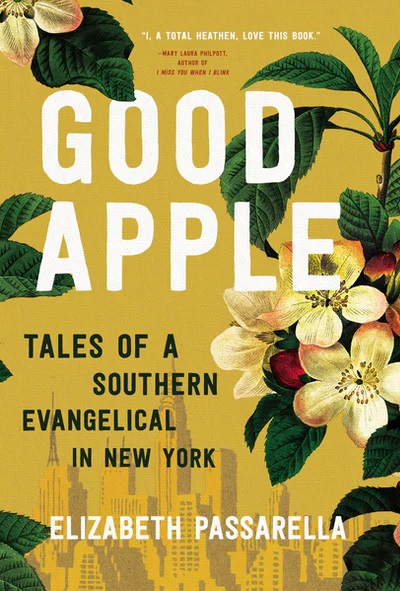 Memphis-born Elizabeth Passarella didn't leave behind her Southern identity when she became a New Yorker. Rather, her adult life--and her memoir, Good Apple (Thomas Nelson, $25.95)--centers on learning to reconcile the two, or at least laugh at the tension between them. In short, punchy essays, Passarella takes readers through the highs and lows of her life in Manhattan: rats in her bedroom, public marital disputes, the Rockettes, the trickiness of navigating politics (electoral and cultural) with grace. All three women write with humor and insight about the situations that have shaped them into their truest selves. --Katie Noah Gibson, blogger at Cakes, Tea and Dreams
Memphis-born Elizabeth Passarella didn't leave behind her Southern identity when she became a New Yorker. Rather, her adult life--and her memoir, Good Apple (Thomas Nelson, $25.95)--centers on learning to reconcile the two, or at least laugh at the tension between them. In short, punchy essays, Passarella takes readers through the highs and lows of her life in Manhattan: rats in her bedroom, public marital disputes, the Rockettes, the trickiness of navigating politics (electoral and cultural) with grace. All three women write with humor and insight about the situations that have shaped them into their truest selves. --Katie Noah Gibson, blogger at Cakes, Tea and Dreams


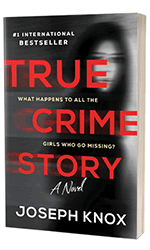



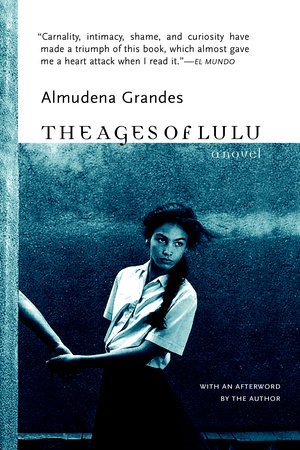 Almudena Grandes, the "award-winning Spanish writer and ardent feminist who shot to fame with an erotic novel about a woman rebelling against social norms," died November 27 at age 61, the
Almudena Grandes, the "award-winning Spanish writer and ardent feminist who shot to fame with an erotic novel about a woman rebelling against social norms," died November 27 at age 61, the 